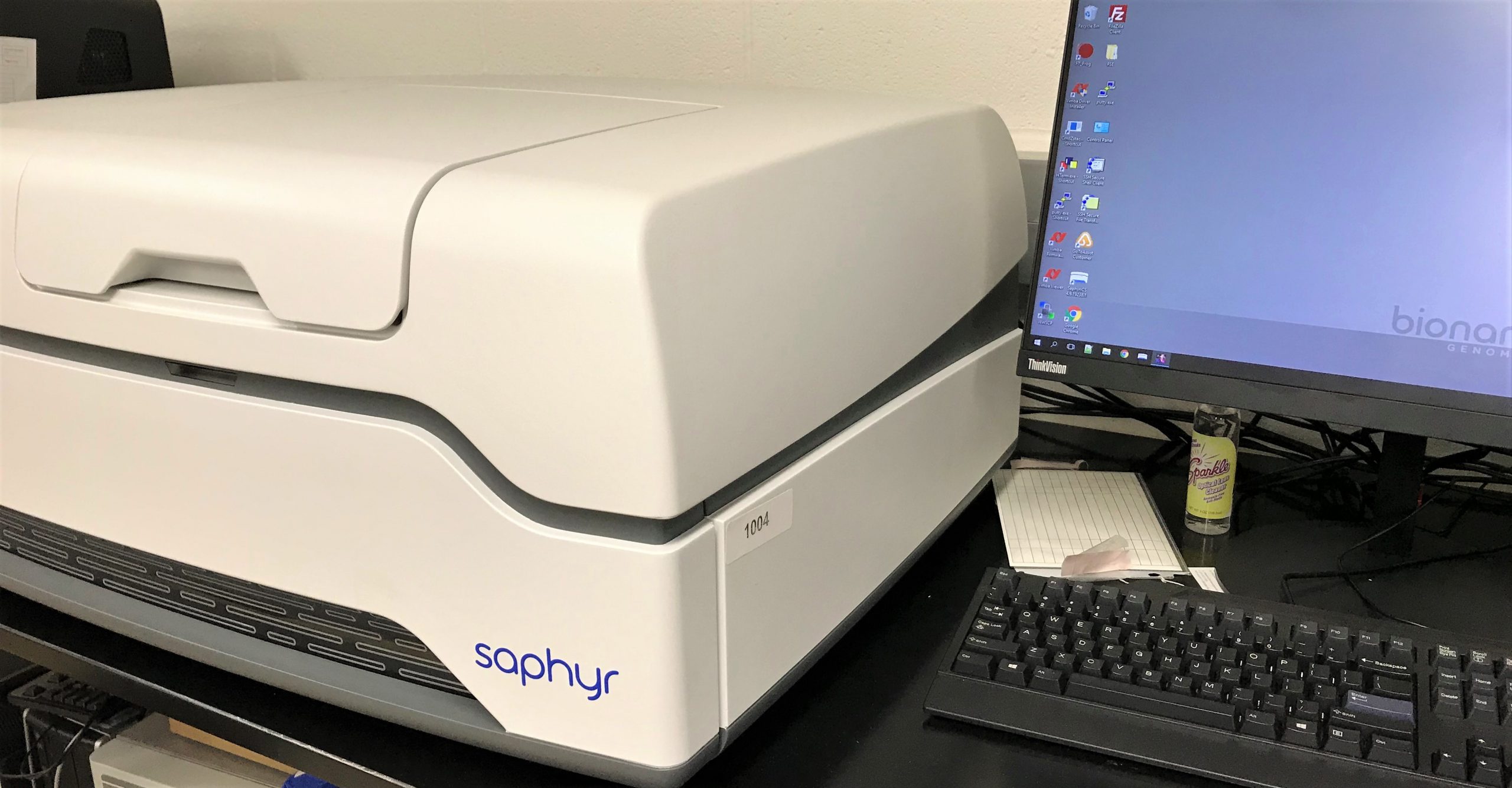Long Read Sequencing
Oxford Nanopore
Currently, many existing genome assemblies were created using short-read sequencing technology. However, short-read sequencing is limited in its ability to capture large structural variation, which are vital for areas of medical research as they have been associated with several diseases such as schizophrenia and cancer. Projects that require long reads can turn to the Oxford Nanopore, which can cover the whole structure variant in one read. This results in more accurate genome assemblies and a better understanding of genome architecture in genomic diseases. Through long-read sequencing, reads are more likely to span the full repetitive region allowing the creation of more accurate genome assembly. Oxford Nanopore provides the ability to obtain long-reads on the GridION and MiniION to provide a complete understanding of human genetic variation, allowing enhanced characterization of structural variation, repetitive regions, haplotype phasing, RNA splice variants, isoforms, and fusion transcripts. More information on the Oxford Nanopore can be found under Technologies tab, Long-Read Technologies.
Through long-read sequencing, reads are more likely to span the full repetitive region allowing the creation of more accurate genome assembly. Oxford Nanopore provides the ability to obtain long-reads on the GridION and MiniION to provide a complete understanding of human genetic variation, allowing enhanced characterization of structural variation, repetitive regions, haplotype phasing, RNA splice variants, isoforms, and fusion transcripts. More information on the Oxford Nanopore can be found under Technologies tab, Long-Read Technologies.
Bionano: The Saphyr
 The Saphyr offers a more accurate alternative to traditional NGS systems and a rapid turnaround time, in addition to more flexible mapping options that can fit individual project’s research goals. This new technology provides new abilities to explore a diverse variety of experimental design options, ranging from diagnosing genetic disorders to examining the genomic integrity of cell lines.
The Saphyr offers a more accurate alternative to traditional NGS systems and a rapid turnaround time, in addition to more flexible mapping options that can fit individual project’s research goals. This new technology provides new abilities to explore a diverse variety of experimental design options, ranging from diagnosing genetic disorders to examining the genomic integrity of cell lines.
The Saphyr is best suited for researchers who want to create de novo maps of genome structure. The Saphyr can also detect large structural variants, such as deletions, duplications, inversions, and translocations, found in cancers and genetic disorders. Published studies report that, the Saphyr correctly identified genomic rearrangements in prostate cancer and was used to diagnose patients with Duchenne Muscular Dystrophy. Although the Saphyr can be used for both animal and plant focused research, it is best suited for human research. More information on the Long Read Technologies, Bionano Saphyr can be found under Technologies tab, Long-Read Technologies.
Relevant Long Read Services Forms and Guides
Oxford Nanopore Submission FormBionano Submission Instructions
Bionano Submission Form
Oxford Nanopore White paper
BioNano White Paper